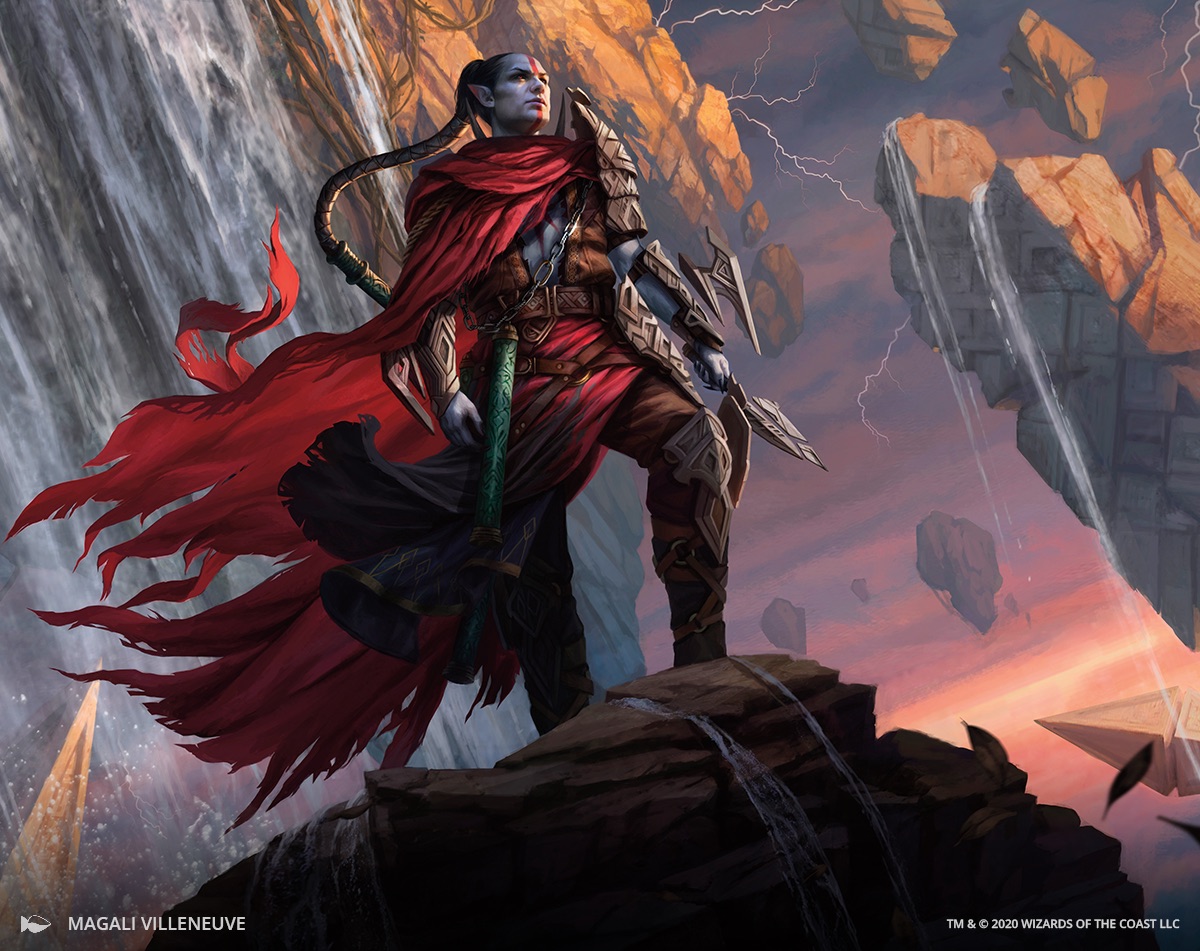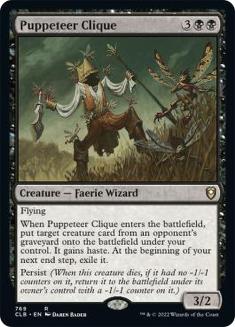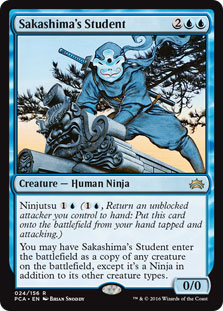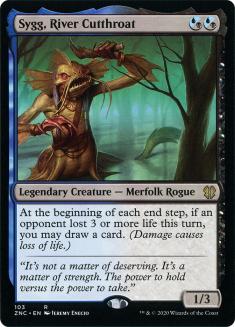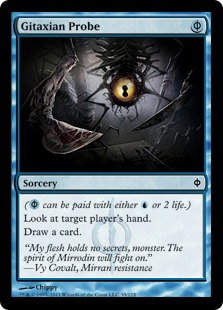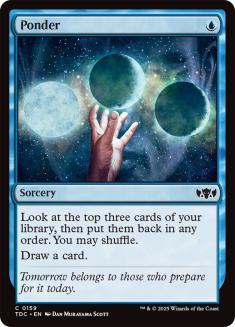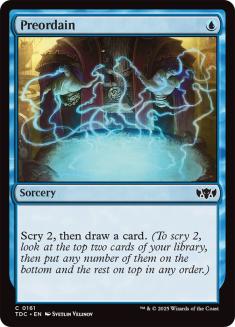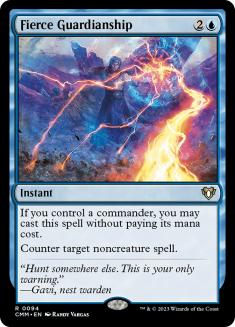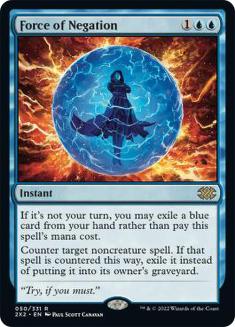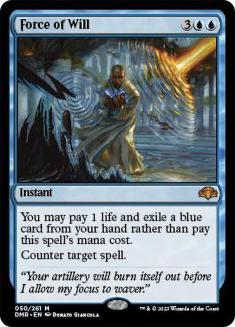Commander is a format like no other. The swath of desirable outcomes is broad and play styles are varied. Decks aren’t built with a tangible goal in mind—like winning tournaments—but with an eye toward exploration and expression. From the durdle-fest to the most turbo of kills, part of the Commander experience is finding where you’re comfortable while recognizing that one size does not fit all. So long as everyone in a particular game is close to being on the same page, everyone will have a positive experience. Part of that is knowing where you are with a specific deck.
So it is with the deck I’ll feature today. Braden Bowish is a cEDHer whom I’ve met at an SCG CON and who has been open about engaging with me in discussing not just his preferred spot on the format’s continuum, but the health of Commander in general. He’s a jovial and engaging person to chat with, one that’s committed to removing some of the toxicity that’s crept into certain edges of the community. I’ve been a guest on his podcast and I occasionally turn to him, among others, to help me keep a finger on the pulse of the higher-powered end of the community. I’ll let him introduce himself in his own words:
I spend a good deal of time in online brewing or optimizing new decks, which means I am fortunate enough to have a few decks on the Decklist Database. Of the decks I have created, you might recognize Medium Green, Pako’s Modern Life, Korvold Faux-Farm, and Yuriko Sneaky Farm.
Lately, Korvold, Fae-Cursed King has been my favorite Commander to play thanks to its incredibly powerful synergies with Dockside Extortionist, my personal pick for the best red card in Commander. Trying to figure out how to replay Dockside Extortionist over and over again is a real puzzle; it’s the hardest deck I’ve played in Magic to this point.
If you’re interested in finding out more about Korvold, cEDH, or even my new rekindled interest in Casual Commander, check me out on Twitter over at @BradenMTG or @cEDHcast as well as YouTube. If you’re interested in the style of decks I build, I keep most of my decks on Moxfield.com, so please check out my Moxfield page.
When Braden told me recently that he had built a casual deck, I was intrigued. My first thought was to reconcile what he thought of as casual and what I might. It’s clear from the outset that his definition is still a bit Spikier than mine, and (with no value judgments in either direction) that’s the interesting part of this exploration. Let’s take a look at the list and what he had to say about it.
Creatures (24)
- 1 Gilded Drake
- 1 Pestermite
- 1 Frogtosser Banneret
- 1 Mothdust Changeling
- 1 Oona's Blackguard
- 1 Sygg, River Cutthroat
- 1 Phantasmal Image
- 1 Invisible Stalker
- 1 Sakashima's Student
- 1 Sepulchral Primordial
- 1 Notion Thief
- 1 Triton Shorestalker
- 1 Marang River Prowler
- 1 Slither Blade
- 1 Spellseeker
- 1 Loyal Drake
- 1 Nightveil Sprite
- 1 Changeling Outcast
- 1 Faerie Vandal
- 1 Ghostly Pilferer
- 1 Merfolk Windrobber
- 1 Blackbloom Rogue
- 1 Soaring Thought-Thief
- 1 Enigma Thief
Planeswalkers (1)
Lands (31)
Spells (43)
- 1 Sensei's Divining Top
- 1 Mana Drain
- 1 Mystical Tutor
- 1 Yawgmoth's Will
- 1 Force of Will
- 1 Sol Ring
- 1 Dark Ritual
- 1 Windfall
- 1 Intuition
- 1 Timetwister
- 1 Merchant Scroll
- 1 Talisman of Dominance
- 1 Chain of Vapor
- 1 Mystic Remora
- 1 Mind Stone
- 1 Steal Enchantment
- 1 Rhystic Study
- 1 Fact or Fiction
- 1 Dimir Signet
- 1 Delay
- 1 Ponder
- 1 Notorious Throng
- 1 Preordain
- 1 Gitaxian Probe
- 1 Cyclonic Rift
- 1 Whispering Madness
- 1 Rapid Hybridization
- 1 Swan Song
- 1 Toxic Deluge
- 1 Whelming Wave
- 1 Endless Obedience
- 1 Unsubstantiate
- 1 Open into Wonder
- 1 Mox Amber
- 1 Force of Negation
- 1 Arcane Signet
- 1 Midnight Clock
- 1 Wishclaw Talisman
- 1 Drown in the Loch
- 1 Deadly Rollick
- 1 Fierce Guardianship
- 1 Silundi Vision
- 1 Whispersteel Dagger

The first thing I did was cut most of the spells that cost 3 or more. I want to play a Rogue on Turn 1, a two-mana rock on Turn 2, and Anowon on Turn 3. This curve sets up the value engines, early ramp, and lets me get in with evasive dudes early on. The Rogues take some time before they properly pressure my opponent’s life totals, but by setting up this engine early, it makes it more likely I’ll be able to protect it later on.
Next, I added the interaction from my Yuriko deck that I often play at the high-powered end. I like the playstyle of playing hate bears or other dorks and protecting them as they attack for small amounts of damage. In other formats I have played Death and Taxes or Hatebears, and this mimics that a bit while still getting to play the counterspells and bounce spells I enjoy.
I tried to make sure that most of my payoffs for milling my opponent are behind a pretty big cost of entry. Sepulchral Primordial, Mnemonic Betrayal, and Endless Obedience are all quite expensive, which means that for me to actually earn the payoffs of milling I have to really work for it. I think this also has the benefit of forcing me to be extra committed to the board to make sure that I don’t lose my value engines, which creates a lot more fun gameplay than simply reanimating the biggest thing in the graveyard and smacking someone with it.
First of all, the deck just looks like fun to play. You have plenty of early action, which will keep you engaged and interested in the sequence of play, as opposed to just ramping up for the big stuff to happen. I get that this is a major part of the appeal of this style of deck.
During my time working at Wizards of the Coast (WotC), I had a chance to play with a play test version Anowon and what became the preconstructed deck; I thoroughly enjoyed it. The card draw engine was cool without being broken. Rogue tribal has a great feel anyway, especially with the unblockable creatures. Not being the beefiest is commonly a liability in Commander, so the unblockable Rogues helps Anowon be the commander to bring it all home. Unlike other tribal decks, you don’t need that many members of the tribe on the battlefield at one time in order to be effective.
I also like the movement of the deck from the early-turn engine into the mid-turns payoff of the milling; I’d want to do more of it. Sepulchral Primordial has long been one of my favorite cards. I’d be hard-pressed to not put a copy of Puppeteer Clique into the deck as well.
Part of the joy of playing this deck is seeing what value you can get out of the cards you mill from your opponents. As we’ve discussed before, I’d rather my brain win the game than my cards. I don’t want to just vomit a combo onto the table; I want to have to work for it. Figuring out what best to do in a game state (as opposed to how to get around the game state to your inevitable conclusion) is my style of play. For me, this means playing the deck instead of the deck playing me. If it sometimes means not winning because I get it wrong, that’s an acceptable payoff for the thrill of getting it right, especially from a position that looked unfavorable.
There are a few individual card choices which pique my interest. Whispersteel Dagger is one that I had to look up; in my version of the deck, I might choose Havengul Lich instead, but I get the appeal. Open Into Wonder is another that seems criminally underplayed. It could get a little expensive, but the idea of this deck isn’t really drawing seven or eight cards at a time, but a consistent grind. Ghostly Pilferer gets my motor running for sure. I’d rather play it than Drannith Magistrate, once again due to my preference to do things actively instead of prevent them passively.
Returning to the idea of evaluating and using the game state, I’m happy to play Clones like Sakashima’s Student and Phantasmal Image. Combined with the unblockable Rogues, Sakashima’s Student’s ninjutsu ability is particularly spicy. Speaking of stuff that’s piquant, Sygg, River Cutthroat doesn’t need for you to make the life loss happen. It can frequently draw you several cards in a turn cycle and no one is holding back from dealing damage just so you don’t draw a card.
The major part of this exploration is what differentiates the deck from a competitive one. One of the clear things is the lack of aggressive tutoring. You don’t see a Demonic Tutor or Vampiric Tutor here. The obvious other one is that there’s no infinite combos; there’s nothing to just plop onto the table and say, “Unless you counter this, I win.” As mentioned, that’s a plus in my book.
Another difference is the absence of the huge card draw engines, like Necropotence, Peer Into the Abyss, and Ad Nauseam. This deck is about doing a thing, but it’s not about doing it right away. Having the commander driving the card draw bus is a significant differentiator.
That doesn’t mean the deck completely ignores Braden’s cEDH roots. There’s a fair amount of sifting through the deck, with cards like Gitaxian Probe, Opt, Ponder, and Preordain. In a more casual deck, those would be impact cards — more expensive and splashier, with a bigger individual payoff. They’d be more concerned with a different kind of synergy. Mystic Remora definitely rings the bell of Braden’s Commander roots.
The large number of mana rocks is also a nod to a higher-powered end. As Braden mentioned in his write-up, a Turn 2 mana accelerator is an important part of the curve. Here, it leads to getting more play out of the deck, not necessarily rushing into the end state. That makes the idea all the more compelling. The social aspect of the format is the most important, but everyone wants to feel like they’re part of the game. The best games are when everyone does something and then some epic stuff happens and someone wins. Who that is is less important than everyone having the feeling that they were involved.
The significant investment in inexpensive interaction is another common theme of higher-powered decks, especially free counterspells like the holy trinity of Fierce Guardianship, Force of Negation, and Force of Will. Delay is certainly a card one rarely runs into at tables more situated to the core demographic. We don’t see Chain of Vapor too often at the 6-7 power tables.
The same goes for the Wheels, with special attention to the pricey Timetwister. Narset, Parter of Veils is a card I’ve been playing a little more of recently as reasonable protection against people going full ham with card draw, but I don’t want to be the person playing it with Wheels. Without Narset’s ability to shut out folks from card draw, the Wheels seem like a bit of overkill in a deck that’s going to draw a bunch of cards anyway. I suspect one’s hand isn’t going to be empty that often, and refilling everyone else isn’t going to lead anywhere good.
One of the things that gets me twitchy about the deck is the land count of 31. I get that the number of mana rocks and relatively low casting cost of the things you want to play early makes it possible, but not hitting land drops on every early turn gets my skin crawling. With the card draw and deck sifting, that’s likely to be less of a concern, but one’s own dispositions are worth considering when putting together any deck. The two-land keep isn’t a normal part of my vocabulary.
I appreciate Braden sharing his work with us. While it’s not going to make me change my style, this kind of deck is worth playing around with and thinking about. I’d value the education of playing some of those cEDH-adjacent spells that we don’t normally see at our tables, if for no reason other than tapping into a different kind of Commander zeitgeist.
Visit my Decklist Database to see my Signature Decks, the Chromatic Project, and more!

